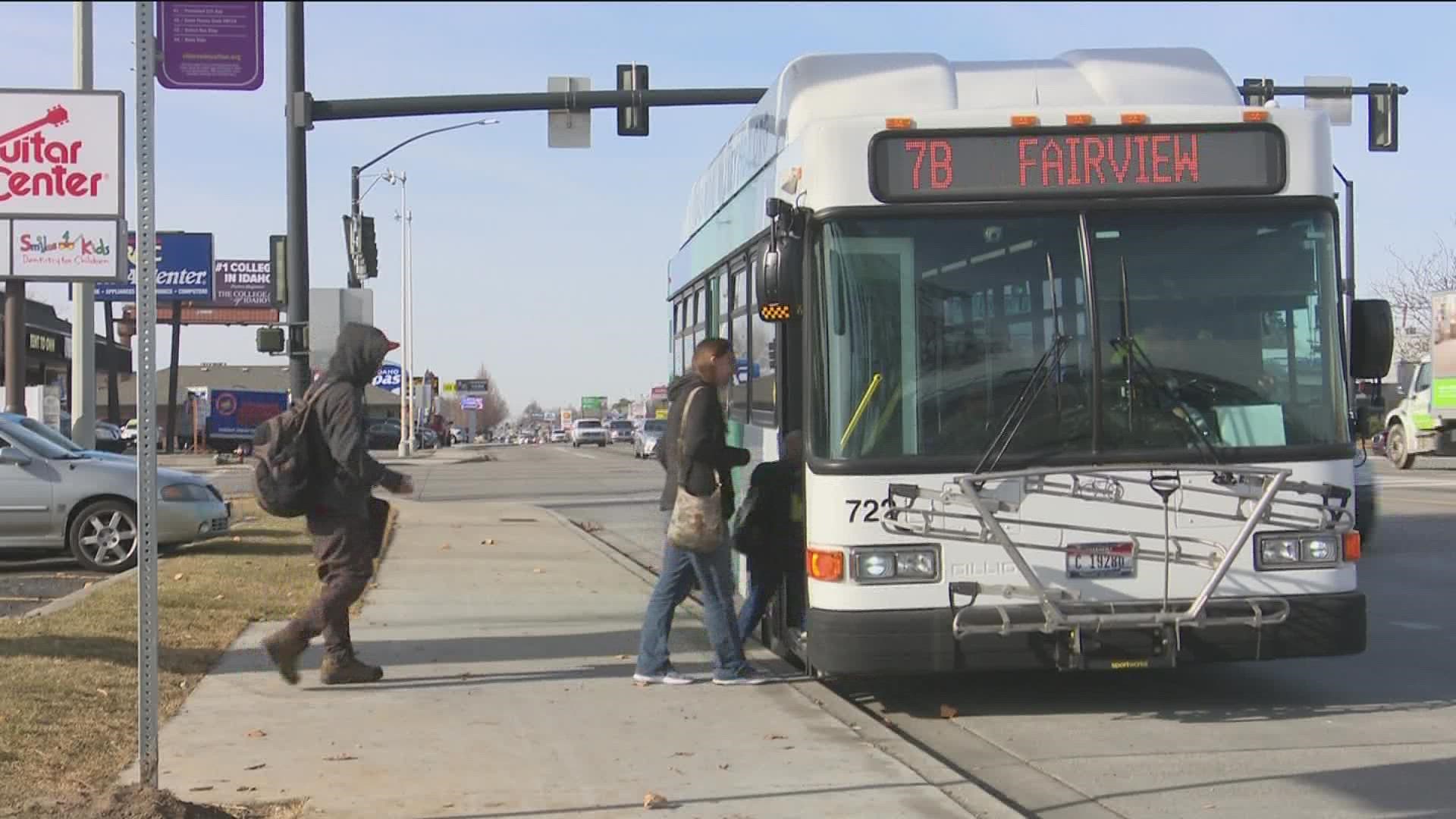BOISE, Idaho — For this week's edition of Growing Idaho, we're asking a question for one of our viewers, “Where's the public transportation?”
A single mother in Kuna sent us an email. She's working hard to provide for her kids, but her car is on its last legs, and without that, it's going to be really hard to get around in the Treasure Valley. That's because, for her, there are just too few public transportation options.
Everywhere you look, things are growing: the population, homes, businesses, traffic… But what about public transportation to ease that traffic and move all these new people around? That’s growing too, but not as quickly as everything else, which is something that Stephen Hunt, the Chief Development Officer at Valley Regional Transit, admits is true.
"We haven't been able to keep up with growth," Hunt said.
Valley Regional Transit (VRT) is the public transportation authority for the Treasure Valley. That includes specialized van services, paratransit, Park & Ride, but mostly buses. So, why haven't we seen the number of buses on the road increase, at the same rate as the population? As you might've guessed, it comes down to money.
"There isn't any direct mechanism that would provide additional revenue for public transportation as the region grows," Hunt said. "So that's the nut that we've been trying to crack for the last 20 plus years."
They do have bus fare, but those fares need to be very affordable. So, while $2.50 for an all-day pass is a great value for riders, Hunt says, it doesn't pay the bills for VRT.
"It's not sufficient to cover all the operating costs by any means," he said. "That's true for us, and it's true for transit across the country."
So, they also rely on federal grants, advertising revenue, and maybe the biggest source, cities in the Treasure Valley. But again, those contributions have not kept up with growth, according to Hunt, who said, "We are dependent on voluntary contributions from local jurisdictions to grow our operating budget. And so that means that when, when a city grows, we would have to go back and ask the city for additional revenue for to be able to expand service."
Which, they've been able to do, in some ways. Meridian is seeing expanded service along Pine and Fairview. And there should be more bussing options in Eagle and Kuna soon. But, Hunt says, it's much easier to expand service, when cities are developed with public transportation in mind.
"That really starts to matter how those buildings are constructed," Hunt said.
For instance, people have told him, “Hey, you should put a bunch of bus stops on Eagle Road.” Unfortunately, Eagle Road, also a highway, really wasn't built for bus stops.
"So that is another barrier that we face, particularly in the valley, is ensuring that the infrastructure and the development is done in such a way that makes transit, at least not offensive... or at least it doesn't assault you when you're trying to use it,” Hunt said. “Like, ‘Oh my gosh, I've got to stand next to 60-mile-an-hour traffic!’"
But if that happens, and we see public transportation expand at the same rate as our population, will people use it?
People love their cars around here. Will we see more people willing to choose a bus over buying and driving a car, to make the tax money put into public transportation worth it?
Hunt says it's not about the question of if there's enough demand for public transportation, but rather, will there be an increased demand on just getting around?
"I think you have to ask the question, well, is there traffic in the valley? Is there transportation demand that grows in the valley? And that is clear to yes, there is," Hunt said. "There's a lot of traffic and transportation demand in the valley. The question is, how can public transportation be used to help meet some of those needs? And the only way it's going to meet those needs is if the service is available."
Essentially, if VRT builds it, they will come... hopefully.
Regarding the email we got from the single mother in Kuna, VRT says they're working with the City of Kuna to expand services there and will be sending out a survey soon, asking people what sort of public transportation options they'd like to see there. Until more bussing options get out there, or where you are, they have other options, like a volunteer driver program.
To see all the options around you, you can go to the VRT website.
Watch more 'Growing Idaho':
See the latest growth and development news in our YouTube playlist:

